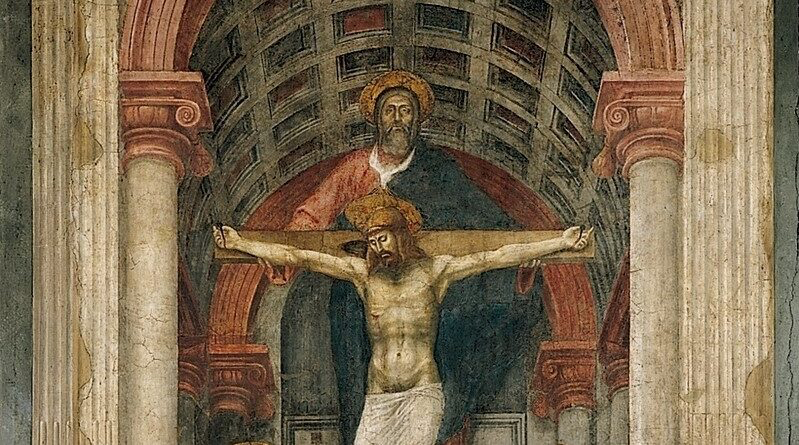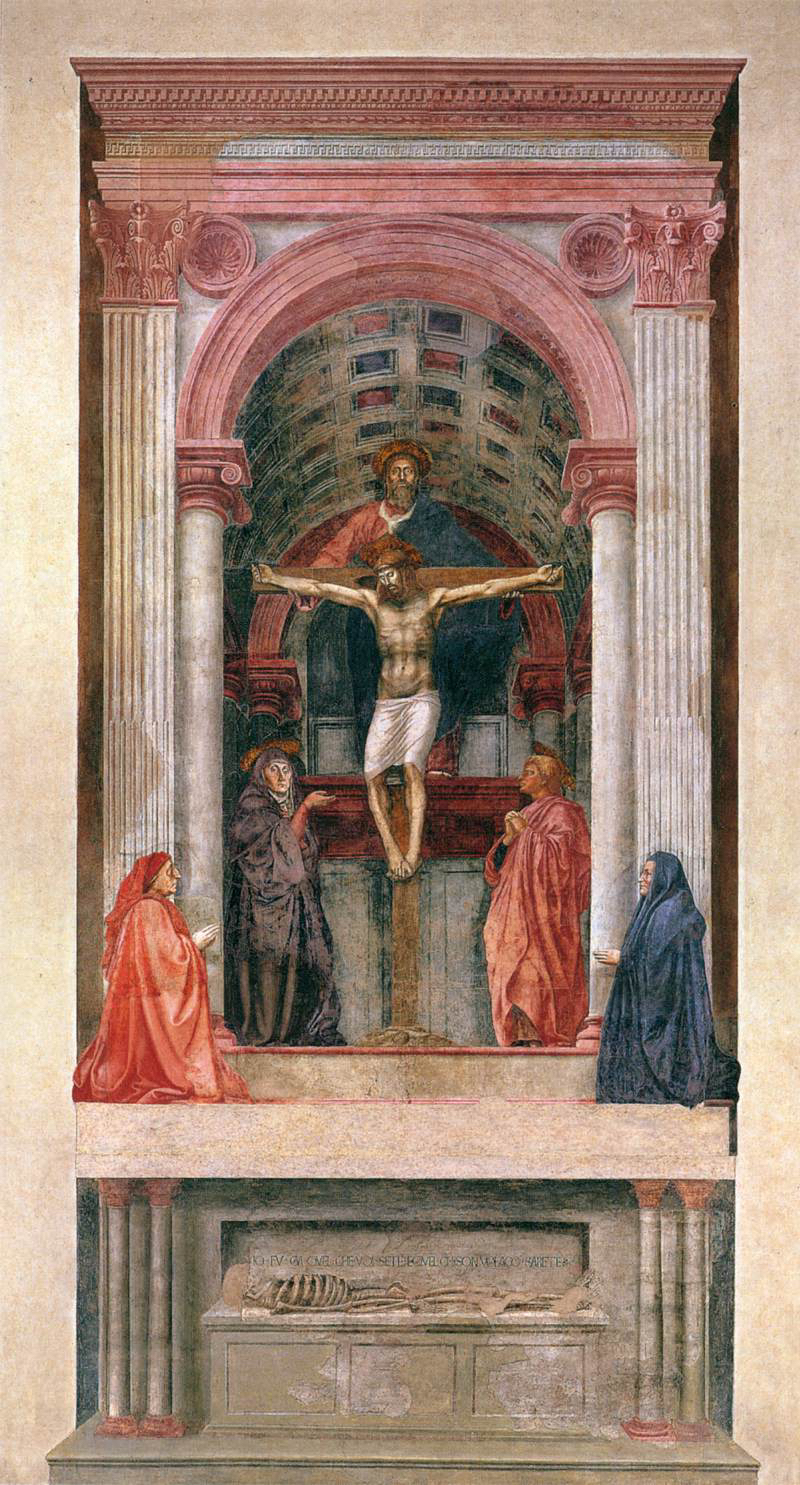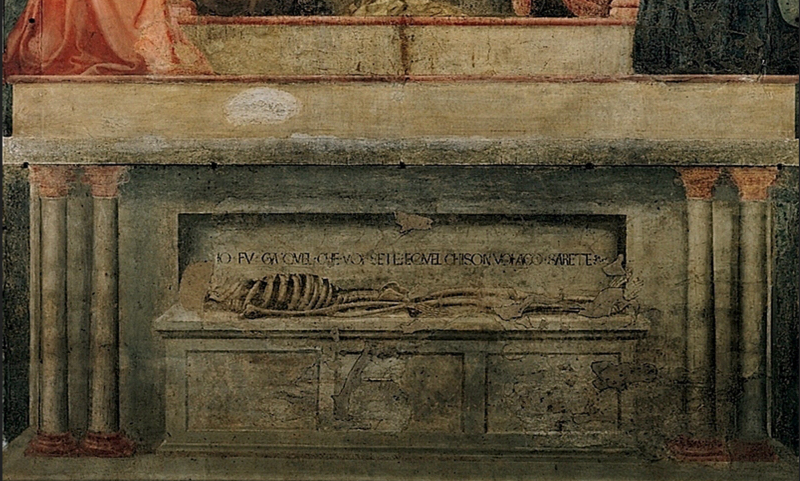
Masaccio’s majestic fresco of the Trinity, painted around 1426-27, which you can admire inside the church of Santa Maria Novella in Florence, is the pictorial work that best summarises the important achievements of the early Renaissance.
It is the last work created by Masaccio, who died at the age of 27 in 1428, in which the artist establishes the proportion between God and men not on the basis of hierarchical criteria but on the basis of perspective. Therefore, the objective of the representation is no longer only allegorical, as the representation of reality and the description of the spiritual world coexist in this painting.
Here I take you on a discovery of Masaccio’s great masterpiece.
TRINITY OF MASACCIO

In Masaccio’s Trinity, one can admire the fundamental principles on which the Renaissance revolution was based: the perfection of perspective construction, the proportional principle, the sense of reality of space, the naturalism of the figures, the citation of classical architecture and the equal treatment on a representative and formal level of patrons and sacred figures.
Masaccio describes a scene of great spiritual value, giving realism to every aspect. The characters are set in a three-dimensional physical world and occupy a precise position in depth, but they also have a precise role based on the pillars of the Christian faith, which places God at the summit.
DESCRIPTION OF MASACCIO’S TRINITY
The scene described by Masaccio is set inside an imaginary chapel with a rectangular plan covered by a barrel-vaulted coffered ceiling, bordered by two round arches supported by Ionic columns.
The architectural description of the environment is precise and the observer is given the illusion of being in front of a real and not an imaginary chapel.
Inside the space described by Masaccio is depicted the Trinity: Father, Son and Holy Spirit.
God the Father has a real body, he is standing on the highest plane and holds the cross with his hands. The crucified Jesus is wrapped in a white loincloth that reaches from his hips to his knees. The dove of the Holy Spirit flies from God to the halo of Christ.
Beneath the cross are the figures of Our Lady and John. The former turns her gaze towards the faithful and points to Christ with her right hand, the latter is wrapped in a long red cloak, clasping his hands in prayer and contemplating Christ.
Outside the space of this imaginary chapel are portraits of the two patrons in prayer, a man and a woman whose identification is not certain. In the lower part one can glimpse the image of a skeleton lying on a sarcophagus and read the inscription: ‘I WAS ALREADY WHAT YOU ARE AND WHAT YOU ARE STILL WILL BE’, which is an admonition to live life according to Christian values in the perspective of the life that will come after death.
ANALYSIS OF MASACCIO’S TRINITY
Masaccio’s Trinity is an illusion created thanks to the technical innovations introduced by the Renaissance, but made even more effective by the perfect central perspective, which fixes its focus on the plane where the knees of the two patrons rest. As a result, the point of view coincides exactly with that of an observer of average height standing in front of the work.
Masaccio’s painting is thus made to be read from a single point of view. However, the figures of God and Christ are not portrayed in foreshortening, as they should have been in order to respect the view from below, but frontally, i.e. applying a second point of view, as if the viewer had to lift himself into the air to look into the eyes of both.
A closer look at the painting reveals that the image of Christ is similar to the one sculpted by Filippo Brunelleschi for the Gondi Chapel in the same church. So Masaccio reproposes in painting what his friend Brunelleschi, author of the symbol of Florence: the dome of Santa Maria del Fiore, had already accomplished in sculpture.

MEANING OF MASACCIO’S TRINITY
The overall meaning of Masaccio’s Trinity is ultimately an invitation to become aware of the spiritual path one must take from earthly mortality (the skeleton) to arrive, through prayer (the two kneeling patrons) and the mediation of the saints and the sacrifice of Jesus, at the final reception of God.
Masaccio is the first Renaissance artist who was able to capture and interpret the everyday reality of men, placing it in real life and no longer in a symbolic context. The new perspective method devised by Brunelleschi and the works of Giotto are fundamental to the creation of Masaccio’s works and determine a new direction for art, which finally inserts reality into artistic representations.

